
Moldova, including Transnistria
For a full scale picture, please click on the picture shown !

A very modern train, which is actually just a totally rebuilt old 1960s train. This is the D1M (M for modernised) of the Moldovan state railways
Calea Ferată din Moldova CFM.
The D1 was a four coach diesel multiple unit train built by the Hungarian Ganz-Mavag. They used to be very common throughout the former Soviet Union
and its satellite states. This one has been thoroughly rebuilt so that only the undercarriage and electric axle motors remain of the old D1, all else
is new. It is now totally airconditioned and has a wifi-system etc. Everything now state of the art.
Picture from the station of Strășeni in Moldova 21.10.2012 by the Wikipedia user Gikü. Public domain free picture according to the CC0 license.
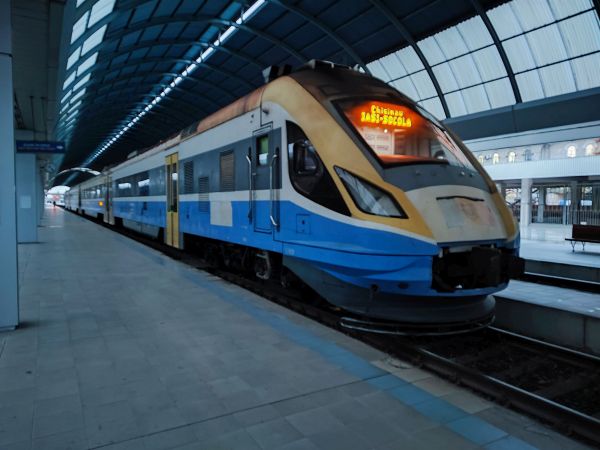
Another D1M totally modernised train, now the pride of Moldavian railroads CFM. Here it is at the capital Chișinău, ready to depart towards Iași
in Romania, to the station of Iași-Socola in the city centre of Iași. There is a dual 1435mm / 1520 mm track between the Moldovan border and the
marshalling yard at Iași-Socola so that Moldovan diesel trains can reach this Romanian city without the change of their bogies.
Picture from Chișinău 17.11.2022 by Markku Salo.
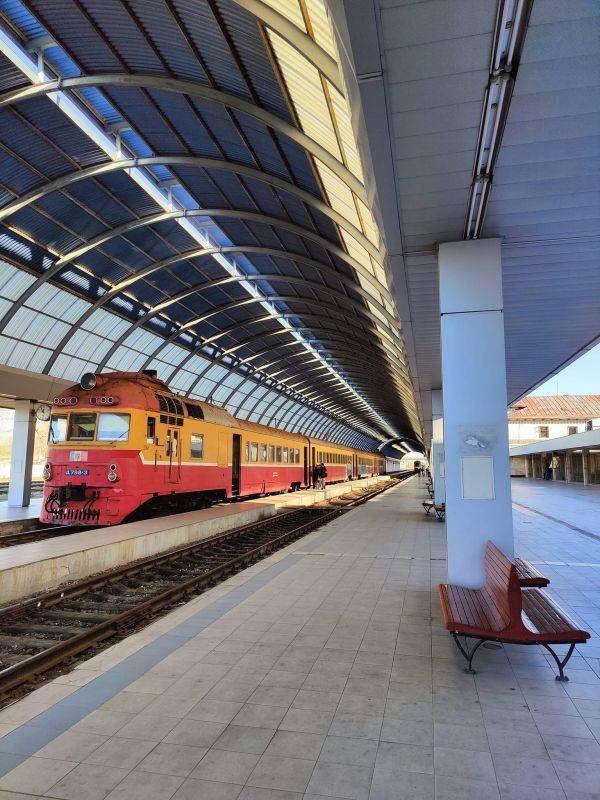
This is how the same D1 trains used to look like before total modernisation and rebuilding. This is one of the very last original D1 trains
in Moldova. During the communist times this used to be a very common train type throughout what then was the Soviet Union.
This one was about to leave Chișinău towards Unghen, close to the Romanian border.
Note the wooden station benches. They have been taken out of this kind of old D1 trains.
Picture from Chișinău 30.3.2023 by Timo Varshukov.
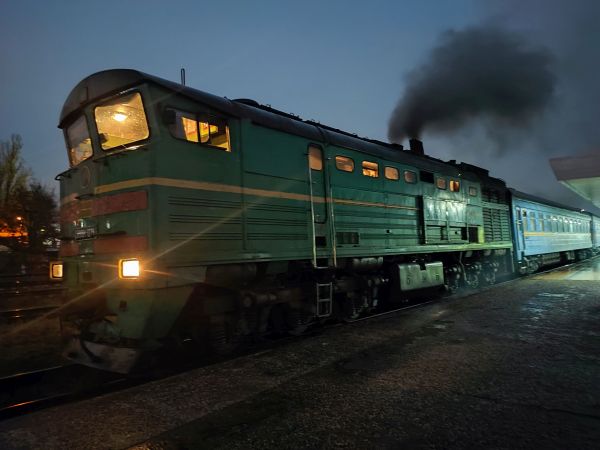
A train with a one third piece of a triple locomotive 3TE10 leading a passenger train. Moldova is a mountaineous country and therefore
old triple locomotives with three six axle units (the middle one without a driver's cab) of the type 3TE10 are common. They were built in the 1960s
in Luhansk which by then was part of Soviet Union, now a part of Russian occupied Ukraine. These triple locomotives are of course most often used
as a package of all three units, but whenever the load of wagons is lighter, they can also be used as individual units or just two units out of a total
of three, so here we have just one third of a 3TE10 locomotive, pulling here a rake of passenger wagons.
Picture from Gara Feroviară Chișinău, the main railway station of the Moldovian capital Chișinău, by Markku Salo 17.11.2022.
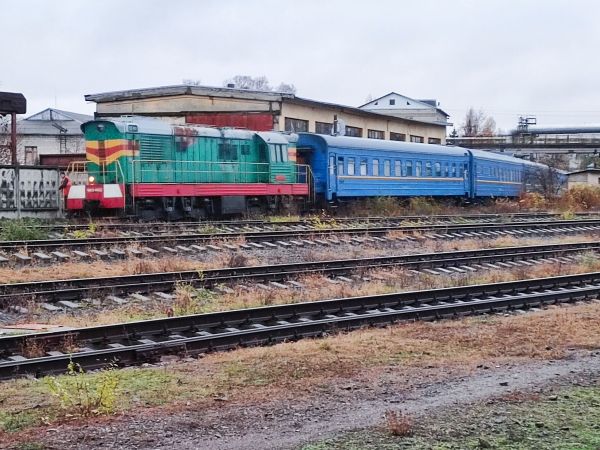
An old Soviet time shunter of the type ChME3 is bringing a rake of passenger wagons to the platform at Chișinău main station. These ChME3 locomotives
were a Russian developed and Czechoslovakian built copy af a 1930s US locomotive from the US company Alco. The US were stupid enough to send a number
of these locomotives during the II world war to the Soviet Union. The Soviets made a copy just replacing all the bolts that were in inches by millimeter
size bolts and then let the Czechoslovakian industry to start mass scale production of unlicensed copies. The original ChME2 was soon replaced by these
ChME3's which were a further development.They were so good that a huge number of them still remain in service in the 2020s in almost all of the former
Soviet block countries, both on 1520mm and on 1435mm gauge tracks use.
Picture from Gara Feroviară Chișinău, the main railway station of the Moldovian capital Chișinău, by Markku Salo 17.11.2022.

Another view of the same ChME3 shunter as shown above. Judging by the very hostile look of the man standing on the locomotive, Moldova might still
be a place where the old Soviet rule that photographing locomotives could be seen as espionage (??) that it's advisable to be careful there.
Picture from Gara Feroviară Chișinău, the main railway station of the Moldovian capital Chișinău, by Markku Salo 17.11.2022.
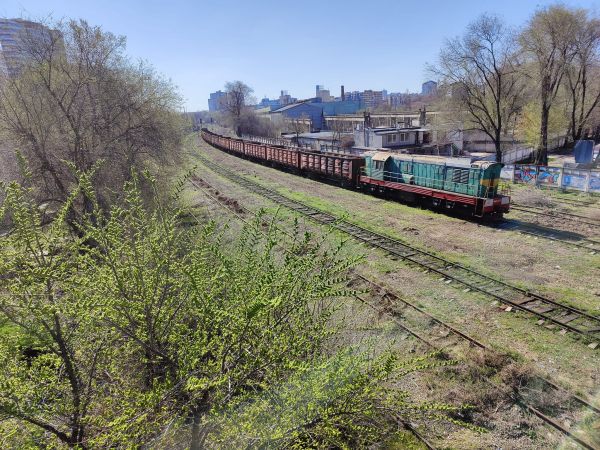
A cargo train, most likely for transporting coal, is rolling in into a shunting yard.
Picture 31.3.2023 from a suburb of Chișinău by Timo Varshukov.

This is the train no. 351 from Kiev, Ukraine to Chișinău, Moldova. The locomotive is of the type TE33AC. They are new machines which were designed
as a replacement for the elderly double locomotives 2TE10. These machines were developed by GE Transportation Systems of USA. GE calls them type
ES44ACi and they belong to GE's locomotive family GE Evolution Series. They are now used at least in Moldova, Ukraine, Azerbaijan, Tajikistan,
Turkmenistan as well as the Ulaanbaatar Railway and Kyrgyz Railways. Almost 300 machines have been built so far. The first 10 came from USA and
the rest have been built by the company JSC Lokomotiv, a subsidiary of Kazakhstan Temir Zholy at a new factory in Nur-Sultan. This individual
is of the passenger train version TE33AC with a top speed of 160 km/h. The cargo version TE33A has a top speed rating of 120 km/h.
Picture 31.3.2023 from a suburb of Chișinău, Visternichen by Timo Varshukov.
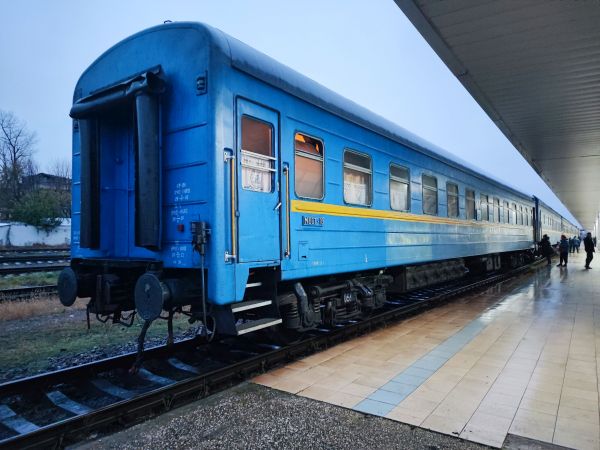
A closer look at the same nighttrain coaches that the shunter locomotive brought to the station.
Picture from Gara Feroviară Chișinău, the main railway station of the Moldovian capital Chișinău, by Markku Salo 17.11.2022.
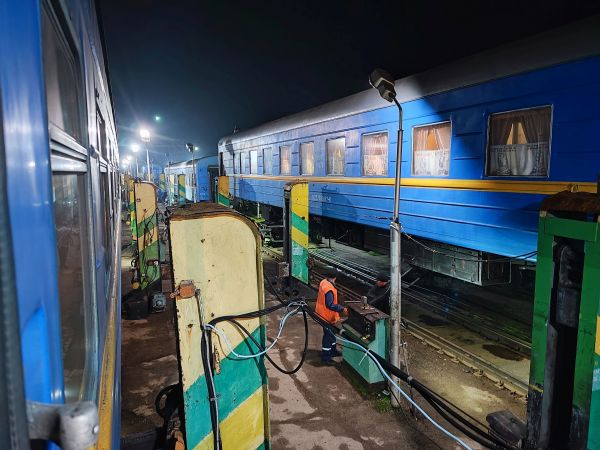
Moldovan railways are built using the Russian 1520 mm gauge whereas the lines in neigbouring Romania use 1435 mm normal gauge. Therefore nighttrain
coaches are one by one lifted up and the bogies undeneath are changed at the border.
Picture from the Moldovan-Romanian border at Ungheni 15.11.2022
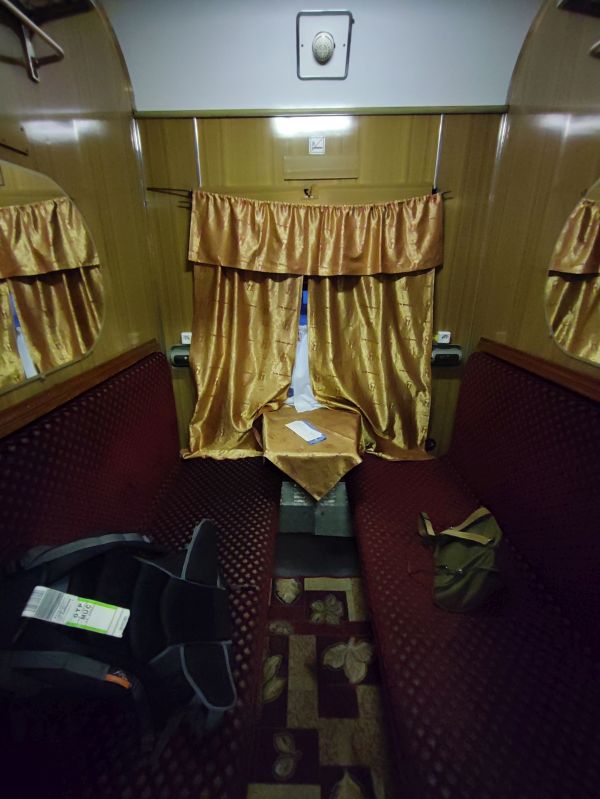
Inside view of a nighttrain cabin of a Moldovan Railways CFM wagon, ready to leave from Moldova towards Romania.
Picture from Gara Feroviară Chișinău, the main railway station of the Moldovian capital Chișinău, by Markku Salo 17.11.2022.

